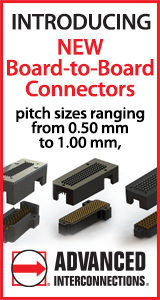|

|
|
| Ask the Experts | |||||||
|
|||||||
|
September 6, 2024 - Updated May 29, 2014 - Originally Posted Trichloroethylene AlternativeWe are located in India and manufacture and assemble circuit boards used in watches. We are currently using a mix of Trichloroethylene and IPA for cleaning in the ratio of 10:90. We are looking to eliminate the use of Trichloroethylene and request your input. P.N. |
|||||||
| Expert Panel Responses | |||||||
|
While there are many good products on the market aimed at replacing TCE (as well as Perchlorethylene and methyl chloride), a little more info may be needed for your vendor to recommend the best possible solution for your process.
Laboratory Mgr. Techspray Pierce Pillon is the Laboratory Manager and lead formulations chemist at Techspray, a division of Illinois Tool Works (ITW) and a leading manufacturer of chemical products for the electronics industry.
A range of engineered solvents are available for cleaning post soldering and ionic residues from electronic assemblies. Many of these solvents are engineered blends that form a azeotrope of near azeotrope. The solvents blends can be used for hand cleaning and within a vapor degreaser. The key is to match the cleaning agent to the soil being cleaned. If you can provide information on the solder paste and or fluxes used to assemble the circuit boards, process information (hand cleaning or vapor degreaser) and contact information, we will send you information on engineered solvent blends that will clean your circuit boards.
CTO Kyzen Corp. Mr. Bixenman is the CTO for Kyzen Corp. Kyzen Corp. is a leading provider of engineered cleaning fluids for high technology manufacturing environments.
You are absolutely correct to try to be moving away from trichloroethylene, also known as"TCE." TCE is a great cleaner, with a long history of industrial applications, but it's also a nasty, toxic, smelly chemical. The US Health& Safety people write lengthy warnings about it on their web site, which include(edited for brevity):"TOXIC, can caused eath. Symptoms may include headache, nausea, dizziness,drowsiness, headaches, fatigue, memory loss, irritability, depression and reduced ability to think or reason, and confusion. Severe exposure can cause unconsciousness. The liquid and the vapour irritate the skin; can cause dry, red, cracked skin (dermatitis). Causes moderate to severe eye irritation. The nerves of the face and head (cranial nerves) may be affected by long-term exposure to trichloroethylene or chemicals formed when it decomposes. May cause hearing loss. May harm the liver. May harm the kidneys.May harm the immune system. It is known to cause: kidney cancer, and has been associated with liver cancer, cancer of the lymphatic system. It is classified as "Carcinogenic to humans." Had enough? I think the message is clear: get rid of the TCE, as soon as possible.Now IPA is an adequate cleaner, but lacks the strength to clean modern lead-free electronics. So you need something strong, but also safe. You did not say if you were using this cleaner in a cleaning tank or on the benchtop. I hope you were not using it in a cleaning tank, like with ultrasonics. Here's Cleaning Rule#1: never, ever use flammable liquids in an ultrasonic cleaning tank. When theultrasonic transducers fail - as they inevitably will - they will inject a burst of energy into the cleaning fluid. If that cleaner is a flammable liquid,the resulting fireball will be great fun to watch, as long as you are far, faraway. If you're using the TCE/IPA on the benchtop, you have many good choices. I would recommend staying away from the highly flammable aerosols that contain hexanes oracetone. These products are good cleaners but are far more flammable that the IPA you are using today. Although their low cost makes them highly attractive,you only need one fire in your factory to really ruin your day. (At MicroCare,we won't even allow hexanes in the door... there are at least 19 different types of hexane, but one of the more popular ones, n-hexane, has a gflashpoint of -23˚C. That's a bit dicey, I think you will agree!) The good news is that there are a number of people-safe, planet-safe, budget-safe choices available for your consideration. In terms of pure cleaning power, you probably would like to choose a cleaner containing trans-dichloroethylene. Trans is a muscle-bound cleaner that dries quickly and leaves no residues. It is flammable, however, so many companies mix it with nonflammable ingredients to produce a nonflammable azeotrope or a nonflammable mixture. One good choice is the Lead-Free Flux Remover - PowerClean from my company, MicroCare, but there are a couple of other good providers out there as well. Just recently a new product came to market that breaks new ground in cleaning effectiveness and safety. It's a specialized blend from my company, MicroCare, and so far no other company has attempted to copy the cleaner. It's the VOC-Free FluxRemover - UltraClean, only from MicroCare. Its a blend of siloxanes and other cleaners that are strong enough for lead-free fluxes, versatile enough to remove most of the popular conformal coatings, and yet safe for people and the planet. It has a flashpoint of 3˚C, which is certainly manageable, and can be used with the dispensing technology that makes the cans last longer and saves money. Call your local distributor and take some samples for a test-drive. I hope this is helpful.
Vice President Micro Care Mr. Jones is an electronics cleaning and stencil printing specialist. Averaging over one hundred days a year on the road, Mike visits SMT production sites and circuit board repair facilities in every corner of the globe, helping engineers and technicians work through the complex trade-offs today's demanding electronics require.
In another life this was my life. Trichloroethylene is a Chlorocarbon material and it is a carcinogen and must not be used. There are tons of information on this topic and I recommend starting with the information on the Montreal Protocol for the elimination of CFC, which was signed September 16 1987. In short Trichloroethylene was replaced with CFC materials(Chlorofluorocarbons), then with HCFC, (Hydrochlorofluorocarbons), then with Aqueous Cleaning, and today with Low Solid content No clean Fluxes. All the chemical manufacturers have information on the new materials available today and you should be contacting them first and qualifying those materials prior to use. These are bad materials and can cause major damages to individuals and the environment. I cannot stress this enough DO not use these materials.
Vice President, Technical Director EPTAC Corporation At EPTAC Corporation, Mr. Lambert oversees content of course offerings, IPC Certification programs and provides customers with expert consultation in electronics manufacturing, including RoHS/WEEE and lead free issues. Leo is also the IPC General Chairman for the Assembly/Joining Process Committee.
My response might sound crazy to many in the USA, but I'm taking into account that you are primarily using a flammable solvent (Isopropanol) with just a small amount of TCE (trichloroethylene), so apparently you are using in this in an immersion process (not vapor degreasing). I'm also taking into account that you probably want a direct, drop-in replacement, at a very low cost. That is the basis for this recommendation because I would not normally recommend this solvent. In your case, I recommend that you substitute the TCE with Trans,Dichloroethylene (trans DCE) at the same ratio that you are using now. The Kb values between Trans DCE and TCE are almost identical and the vapor pressure of the tran DCE mimics that of IPA. Thus, you will not get as much selective evaporation like you are currently experiencing, whether you know it or not. The cost of the trans, DCE is cheap also. CAUTION: This is a flammable mixture, just slightly more flammable than using your current IPA/TCE mixture. You should have proper ventilation equipment and fire extinguishing equipment available. If you have the opportunity to clean the parts in a vapor degreaser (the best cleaning process known to man), I recommend the use of an n-propyl bromide(nPB) / IPA a zeotrope ... several are available from India or China, and they are inexpensive AND nonflammable. You will only need ventilation of about 80 to 100 CFM (cubic ft / minute) to ensure that the assemblers are not adversely effected by the solvent exposure. Also, in the vapor degreaser the solvent is continuously recycled by distillation, so there is very little waste and your solvent remains sparkling clean all of the time. I'd be happy to share more info if you contact me directly. Good luck!
President Chem Logic Rick Perkins is a chemical engineer with more than 33 years of Materials & Processes experience. He has worked with Honeywell Aerospace in high-reliability manufacturing, as well as with several oil-field manufacturing companies. He also has a good understanding of environmental, health, and safety regulations.
There are a number of potential options to replace your current cleaning system. Electrolube have a range of solvent-based and water-based options to offer and selection will depend on the types of residue that you are trying to remove and the cleaning method you wish to use. I would be happy to discuss this with you in more detail, please feel free to contact me. For more information please visit www.electrolube.com
European Technical Support Specialist Electrolube Ltd Jade Bridges is the European Technical Support Specialist for Electrolube. She is responsible for technical support within Europe, offering assistance to customers with product selection, implementation and after sales support across the range of Electrolube products. Her expertise is carried over from her position as R&D Manager for Electrolube, where she was responsible for the new product development and technical support across an array of chemical products for the electronics industry, including conformal coatings, encapsulation resins, thermal management products, contact lubrication and electronic cleaning solutions.
Some non-halogenated solvents that can be used for degreasing and/or defluxing PCAs and components include d-limonene and n-methylpyrrolidone.
Director, EHS TTM Technologies Lee Wilmot has 20+ years doing EHS work in the PCB/PCBA industries, including environmental compliance, OSHA compliance, workers compensation, material content declarations, RoHS & REACH compliance. Active on IPC EHS committee and c-chaired committees on IPC-1331, J-STD-609A on labeling & marking, IPC-1758 on packaging and others.
Reader Comment
As TCE (trichloroethylene) is listed under hazardous substances, we have replaced TCE with Solvent 1002 manufactured by Hybrid Metals located in Bangalore. We are using this from past 2 years and have seen good results.
Suresha. V, Skanray Technologies (Healthcare Division)
Reader Comment
3M has a bunch of azeotropes with trans DCE and HFEs. There are lot of options for TCE substitutes listed under their website.
Rama Varma Rajagopal, 3M, Singapore
Reader Comment
If the goal is to find a safer, non-halogenated substitute, short chain carboxylate ionic liquids may be worth trying. Just like TCE, ionic liquids are non-aqueous and can be easily tuned to match the good performance obtained with TCE. I'm excited about finding safer substitutes and can collaborate on this.
Chengy Gwengo, BioFuran Materials LLC
|
|||||||
| Submit A Comment | |||||||
|
Comments are reviewed prior to posting. You must include your full name to have your comments posted. We will not post your email address. |
|
Free Newsletter Subscription
Circuitnet is built for professionals who bear the responsibility of looking ahead, imagining the future, and preparing for it. Insert Your Email Address |
|

|







